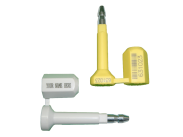Manufacturers Moving Supply Chains Out of China

|
U.S. manufacturers are shifting production to countries outside of China as trade tensions between the world’s two biggest economies stretch into a second year. Companies that make Crocs shoes, Yeti beer coolers, Roomba vacuums and GoPro cameras are producing goods in other countries to avoid U.S. tariffs of as much as 25% on some $250 billion of imports from China. Apple Inc. also is considering shifting final assembly of some of its devices out of China to avoid U.S. tariffs. Furniture-maker Lovesac Co. is making about 60% of its furniture in China, down from 75% at the start of the year. “We have been shifting production to Vietnam very aggressively,” said Shawn Nelson, chief executive of the Stamford, Conn., company.Mr. Nelson said he plans to have no production in China by the end of next year. The moves by U.S. companies add up to a reordering of global manufacturing supply chains as they prepare for an extended period of uneven trade relations. Executives at companies that are moving operations outside China said they expect to keep them that way because of the time and money invested in setting up new facilities and shifting shipping arrangements. Companies said the shifts accelerated after the tariff on many Chinese imports rose to 25% from 10% in May. “Once you move, you don’t go back,” Mr. Nelson said. Yeti Holdings Inc. said it plans to move most production of soft-sided coolers out of China by the end of this year. iRobot Corp. said it would start a new Roomba production line in Malaysia this year. Crocs Inc. said it expects less than 10% of U.S.-bound products to be made in China by next year, down from 30% in June. And diesel-engine maker Cummins Inc. said it has avoided $50 million in tariff expenses by moving some production to India and other countries. Imports from China fell 12% in the year through May, compared with a year earlier, according to the U.S. Census Bureau, the biggest decline since the financial crisis a decade ago. The biggest beneficiaries of that decline have been other countries in Asia where production costs are low, such as Vietnam, India, Taiwan and Malaysia. Many of those countries have recorded sharp increases in exports, although there have been allegations that some of the added traffic stemmed from goods made in China that were routed through those countries without significant alterations to avoid tariffs. U.S. imports from Vietnam are expected to reach $64.8 billion this year, up 36% from 2018, according to consulting firm A.T. Kearney. “We’re moving production to other parts of the world,” Marvin Edwards, CEO of CommScope Holding Co. , said in June. The Hickory, N.C., company is making antennas for sale in the U.S. at its plant in India instead of China. There is little evidence, though, of U.S. manufacturers bringing production from China back to the U.S., a move the Trump administration hoped the tariffs would encourage.While imports from other Asian countries have climbed, U.S. manufacturing output has declined 1.5% through May from a recent peak reached in December, according to the Federal Reserve. The Institute for Supply Management said earlier this month that its manufacturing index slipped again in June to the lowest level since 2016. “If we were to try to do a factory in the U.S., it would be enormously expensive,” said John Hoge, co-owner of Sea Eagle Boats Inc., which makes 85% of its inflatable kayaks, canoes and fishing boats through contract manufacturers in China. Mr. Hoge said the network of manufacturers and suppliers in China that makes boats for Sea Eagle and many of its competitors isn’t as comprehensive in any other country. “It took us 20 years to build up the supply chain in China,” he said. Mr. Hoge estimated the 25% duty on his products that took effect in May would double the Port Jefferson, N.Y., company’s tariff expenses to about $500,000 a year. Crown Crafts Inc. analyzed manufacturing costs in a half-dozen countries before deciding to keep making its baby blankets in China despite the tariff costs. “It’s very difficult to find a country that can do it competitive with China,” Randall Chestnut, CEO of the Louisiana company, told analysts in June. More than 100 companies have asked the Commerce Department to waive the latest 25% tariff on their imports because they said they can’t find suppliers outside of China. One is Zoom Telephonics Inc., which said it lost $1.1 million during the first quarter and likely more in the second as a result of the tariffs on the cable-television modems it imports from China and sells through Amazon.com Inc., Best Buy Co. and other retailers. “I don’t think anybody makes them in the U.S.,” said Frank Manning, CEO of the Boston-based company, in an interview. “We’re bleeding”. |



